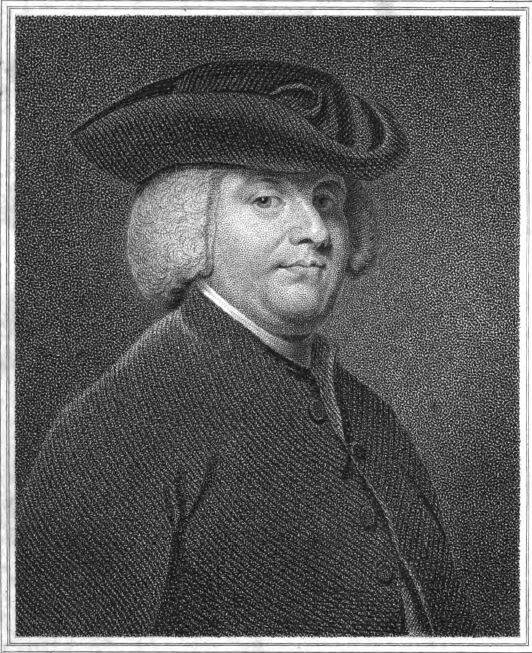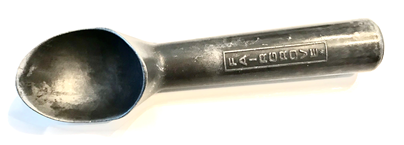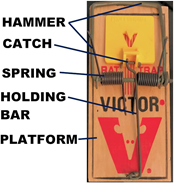Sample Text
Example Text: Excerpts from CHAPTER 7
Design In Biology
Rom 1:20 For since the creation of the world His invisible attributes, His eternal power and divine nature, have been clearly seen, being understood through what has been made, so that they are without excuse.
In the previous chapter about cells, perhaps you were impressed enough about the complexity of basic cells and the organization that you came to the conclusion that there was purposeful design behind it all. Most biologists are impressed with that as well. Those who hold to an evolutionary view - that is, that all living things descended from a common ancestor by the process of random mutation and natural selection - are likely to assert that there is the appearance of design. In other words, all things that have evolved were entirely by random mutations and natural selection with no purpose in it at all, and one’s intuitive sense that life suggests or proves a creator is a false conclusion.
Contrast that with the perspective offered in 1802 by William Paley, a theologian and naturalist, in his treatise: Natural Theology.

The following is a famous quote from that treatise which is known as the watchmaker analogy.
“Suppose I found a watch upon the ground, and it should be inquired how the watch happened to be in that place, I should hardly think…that, for anything I knew, the watch might have always been there. Yet why should not this answer serve for the watch as well as for [a] stone [that happened to be lying on the ground]?… For this reason, and for no other; namely, that, if the different parts had been differently shaped from what they are, if a different size from what they are, or placed after any other manner, or in any order than that in which they are placed, either no motion at all would have been carried on in the machine, or none which would have answered the use that is now served by it.”
Design
First meaning: Design as an esthetically pleasing arrangement of elements.
There is much to enjoy in finding beauty in the natural world. At first blush, this may seem merely a subjective matter of personal taste. Clearly natural beauty is seen and clearly God did not take a paint brush to decorate every flower or creature. However, there are aspects to be considered: why is beauty a common part of creation and why does one find beautiful colors in sea organisms that live so deep in the oceans that human eyes would rarely see them? Why are features that are found to be mating lures in other creatures attractive to us as well. Darwinism is so minimalist that it is incapable of answering such questions.
Second Meaning: Design can be appreciated in purposeful elegance.
A short time later, my father came home from work with a new design in ice cream scoops, very much like this one below. It worked marvelously well and with no pitfalls. It scooped up a curl of ice cream, transported it safely to my bowl where a turn of the wrist would deposit it with no need to stick my finger or a teaspoon into the concavity to dislodge it. There were no moving parts to dislodge or break. 
My parents took me to a science and technology museum where, to my wondering eyes, there was just such a scoop that won an award for elegance in design and purpose.[2]
Every day we recognize design and appreciate simplicity in design just as well as we do complexity in design in things with many parts or one part. One-part design that serves a purpose well is considered elegant. We intuitively have a sense when things are well designed by any number of criteria, but especially form and function. Intuition is not a metric recognized as of value in biology but it can be a great motivator to explore and research further.
As an example, consider a frog’s tongue. It is a highly extensible muscular organ that is hinged in the front of the mouth so it is snapped out like a whip to catch prey. It is coated with a thin secretion that turns viscous and sticky just as the tip of the tongue reaches the prey to engulf it, then back to a more fluid consistency when the prey can be released into the beginning of the digestive system. See this video online to learn more about this elegant structure: https://www.youtube.com/watch?v=tOJy_xSMFZk
Third Meaning: Intelligent Design:
As appealing as the first two meanings of design are in terms of appreciating nature, there is an element of subjectivity that lacks sufficient rigor as a scientific hypothesis. As an attempt to develop a more objective paradigm, current scientists have developed William Paley’s sentiment further in what is called The Intelligent Design Movement.
The Intelligent Design Movement attempts to define what would be the attribute or attributes of a feature in an organism that would clearly indicate it is the work of a designer with intelligence (having thought and intention). It is an attempt to cogently argue for design by a creator on an objective, non-revelation basis. Also, it may enrich the study of biology which otherwise has a rather reductionist view of the world that does not consider such things as beauty and purpose or desire.
The attribute seized upon by intelligent design proponents was popularized by Michael Behe in Darwin’s Black Box, published in 1996. He postulated that a strong sign of intelligent design is a system that is irreducibly complex, in that the system: (1) Has parts that contribute to a specific function, and (2) those parts are all necessary for the system to carry out its function. Without one of the parts, the system cannot carry out its function.
As an example: consider the system that makes up a traditional mousetrap. To catch a mouse, each and every part must be present and organized in a functional arrangement with other parts to produce a specific function. If the spring is absent, there is no force or action to snap the hammer down on the rodent. If there is no catch tied into the bait paddle there will be no snap when the mouse releases the catch. If there is no platform, then the parts cannot be held in the proper relationship to each other. 
This is contradictory to Neo-Darwinism which conceptualizes small changes over long periods of time. If a mutation arose that provided for one part of a complex system to be present, it doesn’t wait for generations of fortuitous mutations to provide the other components one by one for assembly. Instead, having no function, the new component would be selected out over generations. The likelihood of many components arising in the same generation as a sort of fortuitous bonus for a fully new system is statistically very unlikely. One of the examples of irreducible complexity in a biologic system that Behe described in a biologic system is the bacterial flagellum.

All the components shown in the diagram1 are necessary for the outboard motor type rotation of the helical flagellum. If any one of them was not present, it would fail to function.
On a macro level, i.e., a multicellular example, is the remarkable nymph stage of a European leafhopper (Issus coleoptratus) which was found to have meshed gears between its hips to synchronize its remarkable jumping ability. The tiny nymph can leap accurately for over a meter at a velocity up to 3.9 meters per second. This mechanical meshing of the gears allows the insect to control the direction and trajectory of its profound hops.

Without the linkage between the hips, the insect would yaw off center and spin out of control like a wayward frisbee. This problem goes away when the insect reaches adulthood as its legs are larger and stronger and having completed its final molt into adulthood, the teeth on the cogs would not be replaced when broken. Remarkably, the teeth are shaped for optimal meshing without breaking for forward jumps only. The insect does not jump backward. There has never been another example of mechanically meshing gears in any other insect or other type of organism.
For a video of the insect and this mechanism, follow this url: https://www.youtube.com/watch?v=Q8fyUOxD2EA